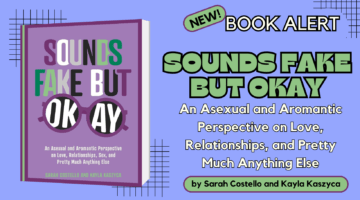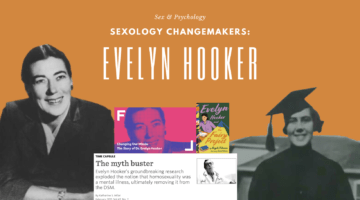Happy Pride Month! LGBTQ+ Research Roundup
June 19, 2024 by Emily Mendelson
Over 50 years ago, local activist groups in the northeast voted to hold “Christopher Street Liberation Day” demonstrations on the last Saturday in June in order to commemorate the events at Stonewall that occurred in June of 1969. These demonstrations occurred on the last day of Gay Pride Week (the last full week of June) and culminated with marches to advocate for equal rights for sexual minorities. These demonstrations were parallelled nationwide, paving the way for Pride as we know it today. In honor of this advocacy and in celebration of Pride month, here’s a recap of five recent studies centering LGBTQ+ experiences that have come out so far this year. You can learn more about the history of Pride month here and here, and read one of our previous LGBTQ+ research roundups here.
[1] State antibullying laws that protect sexual and gender minorities are associated with a decreased risk of poor outcomes for LGBTQ+ adolescents.
Using cross-sectional data from The Trevor Project’s survey of LGBTQ youth, as well as two other data sources, researchers sought to examine the effects of statewide antibullying laws and other protective measures on the experiences of LGBTQ youth. Two protective measures emerged as important for reducing harm towards LGBTQ youth: statewide enumerated laws and the presence of a gay/straight alliances (GSA) in high schools. Both protective measures were associated with a “decreased risk of reporting a nonaffirming school space.” Also, the presence of a GSA was associated with decreased “physical threat or harm based on LGBTQ identity” (p. 4), while statewide laws were associated with decreased risks of LGBTQ youth attempting suicide. Overall, this research highlights the role of institutional support in improving the lives of LGBTQ adolescents.
[2] Drag kings have established new ways to create community among themselves and their audiences.
A new book titled Queering Desire “explores, with unprecedented interdisciplinary scope, contemporary configurations of lesbian, bi, queer women’s, and non-binary people’s experiences of identity and desire.” One of the chapters, written by Liz Mallward and Marie Lou Duret, discusses the drag king collective La Cave à King based in Bordeaux, France. The authors discuss how La Cave à King’s online presence has become integral to maintaining their audience and ability to create community through their performances, due to the combined impacts of the pandemic and the closure of most lesbian bars where drag kings historically performed. In person, this collective is also committed to building “spaces of radical acceptance” (p. 33), especially for members of the lesbian community.
[3] Intersex individuals experience many healthcare-related obstacles, but individuals who break out of binary thinking on sex and gender can make substantial differences in their lives.
Two researchers in the Netherlands interviewed 18 intersex individuals aged 18-38 to better understand the relational and sexual development experiences of intersex adolescents. Given that previous research has found that relational, sexual, and identity development are all challenges intersex individuals may face, the researchers focused on this age group to find both negative and positive factors during these development processes. During the interviews, participants were asked to draw a lifeline, which is a narrative technique that allowed the researchers to organize information across participants’ lifespans as well as identify key moments within a their lives.
Importantly, interviews revealed that the “medical environment especially poses the risk of creating barriers to positive relational and sexual development,” which is aligned with previous research on “the effects of systemic pathologization of intersex bodies” (p. 14). That is, when intersex individuals are constantly told that they are different or have to undergo medical intervention so that their bodies fit in with “normal” sexual organs, their sexual development is hampered. However, positive factors towards their sexual development include “(1) gaining (sexual) agency and self-confidence, (2) connectedness and feeling loved, and (3) gaining knowledge about normativity, sexuality, and diversity in bodies” (p. 15). Overall, this study emphasizes the importance of thinking outside of binary conceptions of sex and gender in order to be more supportive of intersex individuals.
[4] Black mothering communities serve as models for how to sustain the lives of Black LGBTQ+ youth.
Shamari K. Reid and Jaron Reid used a critical duo-ethnography to explore their experiences as Black queer youth within Black mothering communities. They identified how in the face of an anti-Black and anti-LGBTQ+ society, Black mothering communities create homeplaces for Black queer youth to explore their identities freely and openly. Following bell hooks’ articulation of homeplaces, Reid and Reid identify their Black mothers’ homeplaces as sites of resistance, of restoration, and of re-storying, which is done, in part, by “protecting the Black queer imagination during spaces of play” (p. 10), defending against verbal and physical abuse, and providing loving words of affirmation. The researchers provide their experiences within this duo-ethnography “as an example of where schools and education stakeholders might go next as those who serve youth work towards transforming schools into sites of resistance, restoration, and re-storying for Black LGBTQ+ youth” (p. 17).
[5] Identifying as bisexual and pansexual may serve as an identity pathway for asexual-spectrum individuals.
We recently highlighted the book Sounds Fake But Okay, which speaks to the confusion that individuals on the ace spectrum may experience when trying to understand their sexual and romantic identity. Because asexuality is a lesser-understood identity than others under the LGBTQ+ umbrella, a group of researchers were interested in how other sexual identities may provide pathways to identifying as asexual. Using data from the 2018 Asexual Community Survey, these researchers found that 47% of respondents identified as bisexual or pansexual at some point in time. This finding was explored more in-depth qualitatively, and it was found that bi-/pansexuality were “more initially accessible identities for more individuals who later come to identify on the asexuality spectrum” (p. 281) and may serve both as a identity pathways to asexuality as well as identity parallels to asexuality, where some individuals indicate that they are both asexual and bi-/pansexual. The findings of this research highlight the need for models of sexual identity formation to account for both romantic and sexual attraction, as well as how they change over time.
Given we’re only halfway into 2024, it will be exciting to read more LGBTQ+ research as it continues to be published. If you have a study you’d like to be featured, be sure to let us know in the comments below. Happy Pride!
Want to learn more about Sex and Psychology? Click here for more from the blog or here to listen to the podcast. Follow Sex and Psychology on Facebook, Twitter (@JustinLehmiller), or Reddit to receive updates. You can also follow Dr. Lehmiller on YouTube and Instagram.
Image Source: Banner made with Canva
References
[1] Krantz, L. B., MacDougall, M. C., Ehrlich, S., & Brinkman, W. B. (2024). The impact of statewide enumerated antibullying laws and local school interventions on school spaces, physical harm, and suicide attempts for LGBTQ youth. LGBT Health. https://doi.org/10.1089/lgbt.2023.0099
[2] Millward, L., & Duret, M. L. (2024). Staging our desires: Drag kings and the pleasure of community building. In R. Ryan-Flood & A. Tooth Murphy (Eds.), Queering Desire (1st ed., pp. 22–34). Routledge. https://doi.org/10.4324/9781003396000-4
[3] Marinus, M. A., & Cense, M. (2024). A life course perspective on the sexual development of young intersex people. Healthcare, 12(2), Article 2. https://doi.org/10.3390/healthcare12020239
[4] Reid, S. K., Reid, J., & Reid (posthumous), D. (2024). Black mothering communities as homeplaces for black LGBTQ+ youth. Urban Education, 00420859241258186. https://doi.org/10.1177/00420859241258186
[5] Winer, C., Carroll, M., Yang, Y., Linder, K., & Miles, B. (2024). “I Didn’t Know Ace Was a Thing”: Bisexuality and pansexuality as identity pathways in asexual identity formation. Sexualities, 27(1–2), 267–289. https://doi.org/10.1177/13634607221085485

Dr. Justin Lehmiller
Founder & Owner of Sex and PsychologyDr. Justin Lehmiller is a social psychologist and Research Fellow at The Kinsey Institute. He runs the Sex and Psychology blog and podcast and is author of the popular book Tell Me What You Want. Dr. Lehmiller is an award-winning educator, and a prolific researcher who has published more than 50 academic works.
Read full bio >


